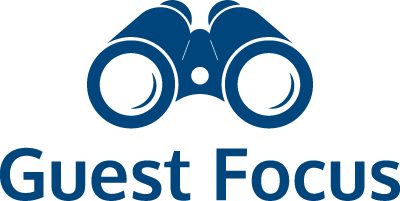Stop Running Your Tour Business as a Charity: The Private & Custom Pricing Framework
This is part 6 of our Pricing Series. You can watch the whole series here, or start with part 1 here.
Many tour operators are unknowingly subsidizing their guests’ amazing experiences instead of building sustainable businesses. They spend hours creating custom itineraries for clients who never book, or they charge the same rate for exclusive private experiences as they do for shared group tours.
If this sounds familiar, you’re not alone. Most operators struggle with pricing public versus private versus custom tours because they don’t understand the fundamental differences between these three models.
Understanding the Three Tour Models
Public tours are standardized shared experiences, typically priced per guest. For day tours, think of a city walking tour at $80 per person with 12-person capacity. Multi-day versions have higher price points covering lodging and meals, but occupancy risk increases significantly.
Private tours sell exclusivity and personalized attention at a premium. You’re telling clients they can book your experience exclusively—but that comes with massive opportunity costs. Those same assets could serve multiple guests, which is why private pricing must include premiums to compensate.
For day tours, this often means flat rates clearly displayed online. A half-day Paris wine tour might cost €650 for up to four guests, with each additional guest adding €100. Multi-day operators can allow guests to buy out scheduled departures entirely.
Custom tours involve significant personalization with consultations and unique billing. This is where most operators get destroyed financially. They fail to track planning and admin costs that go far beyond actual tour delivery.
The Hidden Costs Killing Your Margins
Here’s what most operators miss about custom work: the phantom costs are enormous. If only 5-10 clients per year request bespoke itineraries, add up all the time: back-and-forth communications, custom billing, training guides, opportunity costs of 20+ hours that could have been spent on business development.
The true costs are much higher than most operators realize, which is why successful operators charge 30% above their private tour rates for custom work, plus non-refundable planning fees charged upfront.
For day tours, you might charge $150 per guest for a custom birthday horseback tour, plus $250 planning fee and $250 for premium wines and custom picnic basket. Multi-day operators should require upfront planning fees of $350 or more, credited toward final bills for clients who book.
Industry Trends Reshaping Private Tour Demand
Recent research highlights several key trends. Demand for private bookings is surging, particularly corporate events and team building. Digital optimization has become crucial—operators succeeding with private tours have clear, mobile-friendly online booking processes.
Localized marketing drives results. Broad promotions don’t work as effectively as highly customized offers for specialized markets. Successful operators leverage pricing technology for variable rates based on demand and season, plus upsells to boost revenue per booking.
Choosing Your Strategic Lane
Don’t try to do everything. Your pricing strategy should align with your positioning. You might focus on group departures with privatization options while avoiding custom work entirely. Or you might specialize exclusively in private tours with productized offerings that can still be booked online.
Some operators blend approaches. Standard private offerings plus high-end bespoke services for clients willing to pay premium fees. If people balk at upfront costs, direct them to private tour options.
The Multi-Day Operator Challenge
Multi-day operators often fall into the trap of limiting group sizes to 6-8 people for “intimacy,” essentially running private tours as public ones without premium pricing. To make small groups sustainable, you must charge private tour rates and move upmarket significantly.
One breakthrough many operators experience is learning to create incredible experiences with larger groups. Adding just four people to departures can dramatically improve profitability while maintaining quality.
Framework for Profitable Pricing
Use your cost-plus analysis for pricing floors across all three models. Factor in opportunity costs for private tours and phantom costs for custom work. For private tours, calculate what profit margin you’d accept, perhaps pricing as if you had 10 people when you could fit 15, establishing your minimum private rate.
The key is recognizing that each model serves different market segments with different value propositions. Stop subsidizing experiences and start charging what your expertise and exclusivity are actually worth.
If you’re caught in the fully bespoke space running at a loss, start productizing your offers. Identify your three best-selling tours, create consistent departures, and leverage those assets efficiently. The same itinerary, travel planner, and relationships can generate multiple revenue streams.
Your tour business should serve your lifestyle goals, not consume your life through underpriced custom work that destroys your margins.




